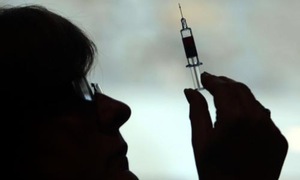
On 2 April 1985, the then prime minister, Bob Hawke, convened a meeting in Canberra with all six state premiers and the chief minister of the Northern Territory. The special premier’s conference, usually referred to as the “drug summit”, was said to be the first meeting of the prime minister and premiers since the second world war to discuss anything other than finance. Of the eight governments represented, five leaders (Hawke; Neville Wran, NSW; John Cain, Victoria; John Bannon, SA, Brian Burke, WA) represented Labor governments while three leaders (Joh Bjelke-Petersen, Queensland; Robin Gray, Tasmania; Ian Tuxworth, NT) represented National or Liberal party governments.
One of the items raised and approved at the drug summit, along with a raft of other decisions, was a proposal to adopt “harm minimisation” as Australia’s official national drug policy. This decision was to have far reaching repercussions.
A few years later, the notion that reducing harm was more important than reducing drug consumption gave policy makers the additional flexibility they needed to approve what was then still a very controversial policy – exchanging needles and syringes with people who inject drugs to slow the spread of HIV. There is little doubt that the adoption of harm minimisation helped Australia avoid a catastrophic HIV epidemic.
The drug summit also approved the revolutionary notion that psychoactive drugs were “all of a piece”. This meant that in future, legal and illegal drugs were to be considered together. A national campaign against drug abuse was established, regular national surveys were approved, and a ministerial council on drug strategy was established to provide a regular forum for all national health and police (or justice) ministers.
In John Howard’s “tough on drugs” era, harm minimisation was defined for the first time as the combination of supply reduction, demand reduction and harm reduction. Despite the adoption of the “tough on drugs” label for his government’s drug policy, the Howard government was the first to provide commonwealth funding to the states and territories to support their needle syringe programs, considerably expand the diversion of selected drug users from the expensive criminal justice system to more effective and less expensive drug treatment, and provide generous financial and technical support to slow the spread of HIV among and from people who inject drugs in Asia.
All commonwealth, state and territory governments in Australia since 1985 have adopted a harm minimisation approach to legal and illegal drugs, even though conservative parties have sometimes attacked this approach while in opposition.
When Australia adopted harm minimisation in 1985, both the term and the concept were novel in other countries and in the UN system. But harm reduction, the preferred term outside Australia, has now become the mainstream global drug policy with all of the major UN organisations responsible for drug policy, as well as international organisations like the Red Cross. While there are still some exceptions to this trend, in countries such as Sweden, Russia and Saudi Arabia, and in a few minor UN organisations with responsibility for drug policy, these are diminishing. And while US officials are still required to avoid using the term “harm reduction”, US opposition to harm reduction is also declining.
The 1985 drug summit was very successful. It enabled many advances to occur in what is a difficult field for politicians and policy makers.
But gradually Australia has moved from being an international leader to an international follower.
This was exemplified by the federal cabinet decision in August 1997 to terminate a “heroin trial” lest such a trial “send the wrong message”. No other field of health policy is as politicised as the alcohol and drug field and has to tolerate such political interference in research. That is why most other fields make progress while the alcohol and drug field stumbles from crisis to crisis with each crisis greeted with complete astonishment.
Three decades after the drug summit we can be grateful for what was achieved. But with almost every family in Australia touched by someone with a serious alcohol or drug problem, there is an urgent need to revitalise the national policy making approach. The drinks industry is still powerful enough to be able to overcome almost every attempt to reduce alcohol’s national toll. The economics of the illicit drug market ensures steady expansion with new and more dangerous products. Meanwhile the politics of illicit drugs ensures that dysfunctional policies continue, overly focused on law enforcement accompanied by a languishing drug treatments system.
